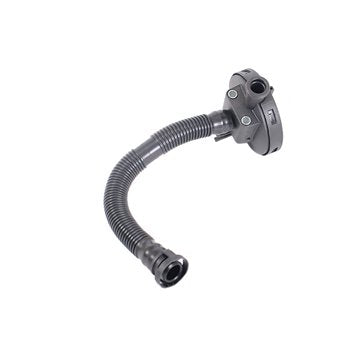Enhance productivity with a powerful clp engine.
Enhance productivity with a powerful clp engine.
Blog Article
How a Clp Engine Can Boost Performance in Numerous Industries
The arrival of CLP engines notes a significant shift in operational performance throughout various markets, driven by their capacity to optimize fuel consumption and minimize downtime. Industries such as manufacturing and logistics stand to acquire significantly from their robust style and regular power result, which promise to streamline operations and improve efficiency. As companies progressively focus on sustainability together with performance, the function of CLP engines comes to be also a lot more important. What stays to be seen is exactly how these developments will shape the future landscape of industrial operations and their effect on broader financial trends (clp engine).
Review of CLP Engines
CLP engines, or Continuous Fluid Propellant engines, stand for a significant development in propulsion innovation, especially for area applications. These engines make use of a constant feed system that allows for the sustained expulsion of propellant, resulting in improved efficiency and efficiency compared to standard strong or hybrid propulsion systems. By preserving a continuous circulation of fluid propellant, CLP engines can accomplish much more precise thrust control, which is important for maneuvering spacecraft in different mission situations.
The design of CLP engines incorporates advanced products and ingenious fuel management systems. clp engine. This leads to reduced weight and boosted reliability, important aspects for long-duration space objectives. The constant operation reduces the threat of burning instability, an usual challenge in conventional rocket engines.

Benefits in Production
The production of Continual Liquid Propellant (CLP) engines presents a number of remarkable benefits that boost both performance and cost-effectiveness. Among the primary benefits is the structured manufacturing process, which reduces the complexity connected with typical propulsion systems. By using fluid propellant, producers can attain better precision in engine efficiency, bring about maximized power outcome and decreased waste.
Additionally, CLP engines help with a greater level of modularity, permitting simpler integration right into different manufacturing lines. This adaptability can dramatically lower preparations and enhance general operational adaptability. The use of CLP modern technology also tends to lessen the requirement for considerable maintenance as a result of fewer moving components, which equates into minimized downtime and functional expenses.

Applications in Logistics
Leveraging Continual Fluid Propellant (CLP) engines in logistics supplies substantial benefits in functional efficiency and reliability. These engines give a durable remedy for different transport demands, allowing the smooth movement of goods throughout vast distances. The intrinsic style of CLP engines enables consistent power outcome, which translates right into smoother and much more predictable transportation timetables.
Among the vital applications of CLP engines in logistics is in sturdy products transport, where they can drive both ground and aerial lorries. Their ability to preserve high efficiency under differing load conditions makes sure that delivery timelines are met, consequently boosting customer contentment. In addition, CLP engines can be integrated into automated logistics systems, helping with real-time monitoring and enhancing path preparation.
Furthermore, the durability of CLP engines lowers maintenance downtime, enabling logistics companies to optimize their functional capacities. This is especially advantageous in warehousing operations, where performance in dealing with and moving goods is critical. As logistics continues to advance, the assimilation of CLP engines stands for a forward-thinking approach that not just enhances performance yet additionally supports the industry's expanding needs for dependability and speed.
Impact on Energy Efficiency
How do Continual Liquid Propellant (CLP) engines enhance energy effectiveness in transport? CLP engines make use of a consistent flow of fluid fuel, maximizing burning processes and keeping a secure thrust result. This layout decreases energy losses related to conventional burning engines, where gas shipment can vary and result in inefficiencies.
The constant operation of CLP engines enables an extra efficient thermal cycle, resulting in higher certain impulse compared to traditional engines. clp engine. This equates to minimized gas intake for the same amount hop over to these guys of job done, dramatically reducing functional expenses throughout different transportation fields, including aeronautics and maritime industries
Moreover, the ability of CLP engines to maintain optimum performance under varying lots problems reduces the need for regular acceleration and slowdown, further enhancing gas efficiency. Enhanced power efficiency not just adds to cost savings however likewise leads to decrease greenhouse gas emissions, lining up with global sustainability goals.
Future Trends and Innovations
Emerging innovations in Continuous Liquid Propellant (CLP) engine modern technology assurance to revolutionize the landscape of transport performance and sustainability. As sectors pivot toward greener options, CLP engines stand at the center, integrating cutting-edge products and design methods that boost performance while lessening ecological effect.
One of the most promising trends article source is the adoption of hybrid systems that integrate CLP engines with renewable power resources. This harmony can optimize gas consumption and minimize exhausts, aligning with worldwide sustainability objectives. Additionally, innovations in computational liquid dynamics (CFD) are assisting in the layout of even more aerodynamically efficient engines, causing minimized drag and boosted fuel effectiveness.
In addition, the development of wise tracking systems is set to boost operational performances. These systems leverage data analytics and IoT modern technology to optimize engine efficiency in real-time, making certain that the engines run within their most efficient criteria.
As research study remains to explore alternative propellant formulations-- such as biofuels and synthetic gas-- the future of CLP engines looks encouraging. By utilizing these technologies, sectors can not just boost their performance however likewise contribute significantly to a cleaner, a lot more sustainable future in transportation.
Conclusion
In conclusion, CLP engines represent a considerable innovation in efficiency throughout several sectors. Their ability to enhance gas consumption and decrease operational costs, incorporated with a constant feed system, enhances power output and functional integrity. The assimilation of sophisticated materials and fewer relocating Get the facts parts minimizes upkeep requirements, while alignment with sustainability objectives settings CLP engines as a crucial innovation for the future. Proceeded development in this field guarantees further enhancements in effectiveness and ecological performance.
Report this page